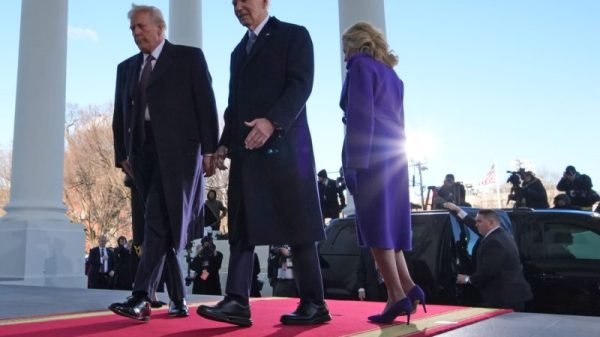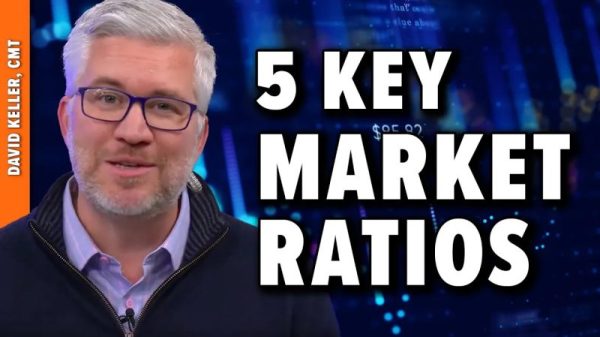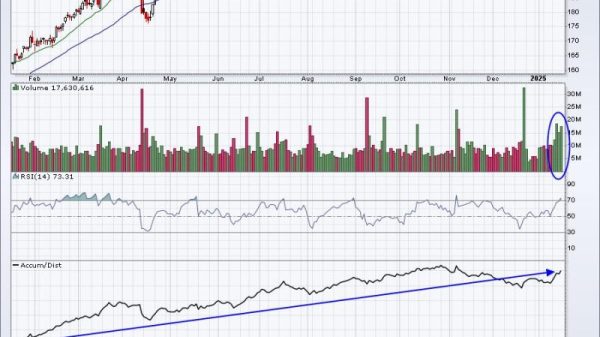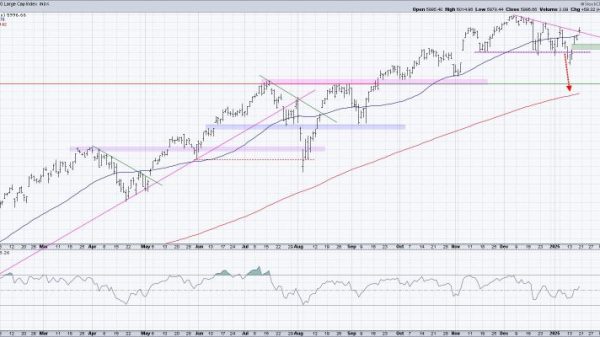China has launched two days of large-scale military drills surrounding Taiwan in what it called “punishment” for so-called “separatist acts,” days after the self-ruling island swore in a new democratically elected leader who called on Beijing to cease its intimidation tactics.
As part of the drills, dozens of Chinese fighter jets carrying live ammunition conducted mock strikes against “high-value military targets” of the “enemy” alongside destroyers, frigates and missile speedboats, according to China’s state broadcaster CCTV.
The exercises, which started early on Thursday and will encircle Taiwan, pose the first real test for newly elected Lai Ching-te as he attempts to manage relations with the island’s powerful authoritarian neighbor.
China’s ruling Communist Party says Taiwan is part of its territory, despite never having controlled it, and has vowed to take the island, by force if necessary.
China’s People’s Liberation Army (PLA) said it launched joint military drills involving the army, navy, air force and rocket force in areas around Taiwan at 7.45 a.m. on Thursday.
The drills are being conducted in the Taiwan Strait – a narrow body of water separating the island from mainland China – as well as north, south and east of Taiwan. They are also taking place in areas around Taiwan’s outlying islands of Kinmen, Matsu, Wuqiu and Dongyin, located just off China’s southeastern coast, the PLA’s Eastern Theater Command said in a statement.
PLA Naval Colonel Li Xi, spokesperson for the command, called the exercises “a strong punishment for the separatist acts of Taiwan independence forces and a serious warning against interference and provocation by external forces.”
The Chinese military also deployed about a dozen Chinese warships around Taiwan, as well as a dozen Coast Guard vessels near Taiwan’s outlying islands, according to the official.
Taiwan has deployed its own warships to monitor the situation, the official said, adding no Chinese aircraft carrier were involved in the drills so far.
‘Irrational provocations’
Taiwan’s Lai is detested by Beijing as a “dangerous separatist” for championing the island’s sovereignty and distinct identity. He succeeded two-term president Tsai Ing-wen to start an unprecedented third consecutive term in power for the ruling Democratic Progressive Party.
Beijing has denounced Lai’s inauguration speech, during which he called on China to cease its intimidation of Taiwan.
Taiwan’s Defense Ministry has condemned China’s drills as “irrational provocations and actions that undermine regional peace and stability.”
In a statement Thursday, the ministry said it had dispatched sea, air and ground forces in response to the drills.
“We stand by with firm will and restraint. We seek no conflicts, but we will not shy away from one. We have the confidence to safeguard our national security,” it said.
Taiwan’s presidential spokeswoman Karen Kuo said in a statement: “It is regrettable to see China threatening Taiwan’s democracy and freedom and regional peace and stability with unilateral military provocations.”
“In the face of external challenges and threats, we will continue to defend democracy and have the confidence and ability to protect national security,” Kuo added.
Taiwan’s 23 million people have long become used to the threat of China’s war drills, and Thursday life continued as normal in the capital Taipei.
While Taiwanese news outlets were reporting on the Chinese drills, it was far from the only headline on their agenda, which also included recent political bust ups in the legislature, and even information on filing taxes during the tax season.
Taipei’s main stock index, the TAIEX, was 0.26 percent up in mid-afternoon trade.
Propaganda push
China’s military drills are as often as much about playing to a domestic audience as signaling intentions internationally. China’s military and state media churned out propaganda and highlighted coverage of the drills, which remained a top trending topic Thursday on tightly controlled Chinese social media platforms.
Footage of the drills released by the PLA’s Eastern Theater Command showed a guided missile frigate, the Nantong, and a pilot climbing into a fighter jet at a military base.
The rhetoric coming from Chinese state media and the PLA portrayed the exercises as a practice run for encircling Taiwan, and even threatening small outlying islands that lie close to China’s mainland.
China’s state broadcaster CCTV said multiple destroyer and frigate formations of the Eastern Theater Command Navy “maneuvered at high speed in multiple directions in the waters surrounding Taiwan, creating an omnidirectional approach in pushing toward the island.”
Meanwhile, the command’s air force dispatched dozens of fighter jets to Taiwan’s main island and outlying islands, according to CCTV.
“Under the support and cover of the Army and the Rocket Force, multiple types of aircraft were organized and loaded with live ammunition, flew to the predetermined airspace to establish multiple strike positions, and coordinated with destroyers, frigates, and missile speedboats to simulate attacking the ‘enemy’s’ high-value military targets and reconnaissance and patrol aircraft,” the report said.
In another report, CCTV published a series of posters of what it calls “the magic weapons killing separatists” promoting Taiwan independence.
They include the J-20 and J-16 fighter jets, the Type 052 destroyer and Type 071 amphibious transport dock, and the Dongfeng ballistic missile. Though the report did not specify if they were being used in the ongoing drills.
Carl Schuster, a former director of operations at the US Pacific Command’s Joint Intelligence Center, said Beijing was trying to stress Taiwan’s older and less numerous hardware.
For instance, “Taiwan’s F-16s are over 20 years old and every flight hour tasked to those air frames draws the fuselage and equipment ever closer to refurbishment, which takes them out of service for 1-4 months. It also stresses the force overall, keeping them on edge,” he said.
Schuster said in addition to the drills around Taiwan’s main island, the pressing of China’s Coast Guard and other forces into waters close to the outlying islands controlled by Taipei is “provocative.”
“It puts Taiwan on the spot. If they react militarily or forcefully, they risk triggering a conflict,” he said.
Rising tensions
Under leader Xi Jinping, China has grown more assertive and ramped up diplomatic, economic and military pressure on Taiwan as the island democracy tightens informal ties with the United States.
In August 2022, China staged massive war games around Taiwan to show its displeasure with then US House Speaker Nancy Pelosi’s visit to Taipei. Beijing fired missiles into waters surrounding the island and simulated a blockade with fighter jets and warships, in its largest show of force in years.
A similar encirclement exercise was also held in April 2023.
Chinese warplanes now regularly fly into Taiwan’s air defense identification zone (ADIZ) and across the Median Line in the Taiwan Strait – an informal demarcation point that Beijing does not recognize but until recent years had largely respected.
Beijing has also exerted pressure on Lai in the lead-up to his inauguration. On May 15, days before Lai took office, Taipei said it detected 45 Chinese military aircraft around Taiwan, the highest single-day number this year.
Evan A. Feigenbaum, vice president for studies at the Carnegie Endowment for International Peace, calls China’s latest drills “an intimidation tactic, part of a pattern, not a sign of imminent war.”
“Beijing has a robust coercion kitbag from which it will mix and match, ratchet up and back and up again to signal its range of options to coerce and inflict pain,” he wrote on social platform X.
Some defense experts noted that the name of China’s latest military exercises “Joint Sword-2024A” suggests another round of drills could follow later this year.
Drew Thompson, a senior research fellow at the Lee Kuan Yew School of Public Policy at the National University of Singapore, noted the drills were part of a pattern.


































